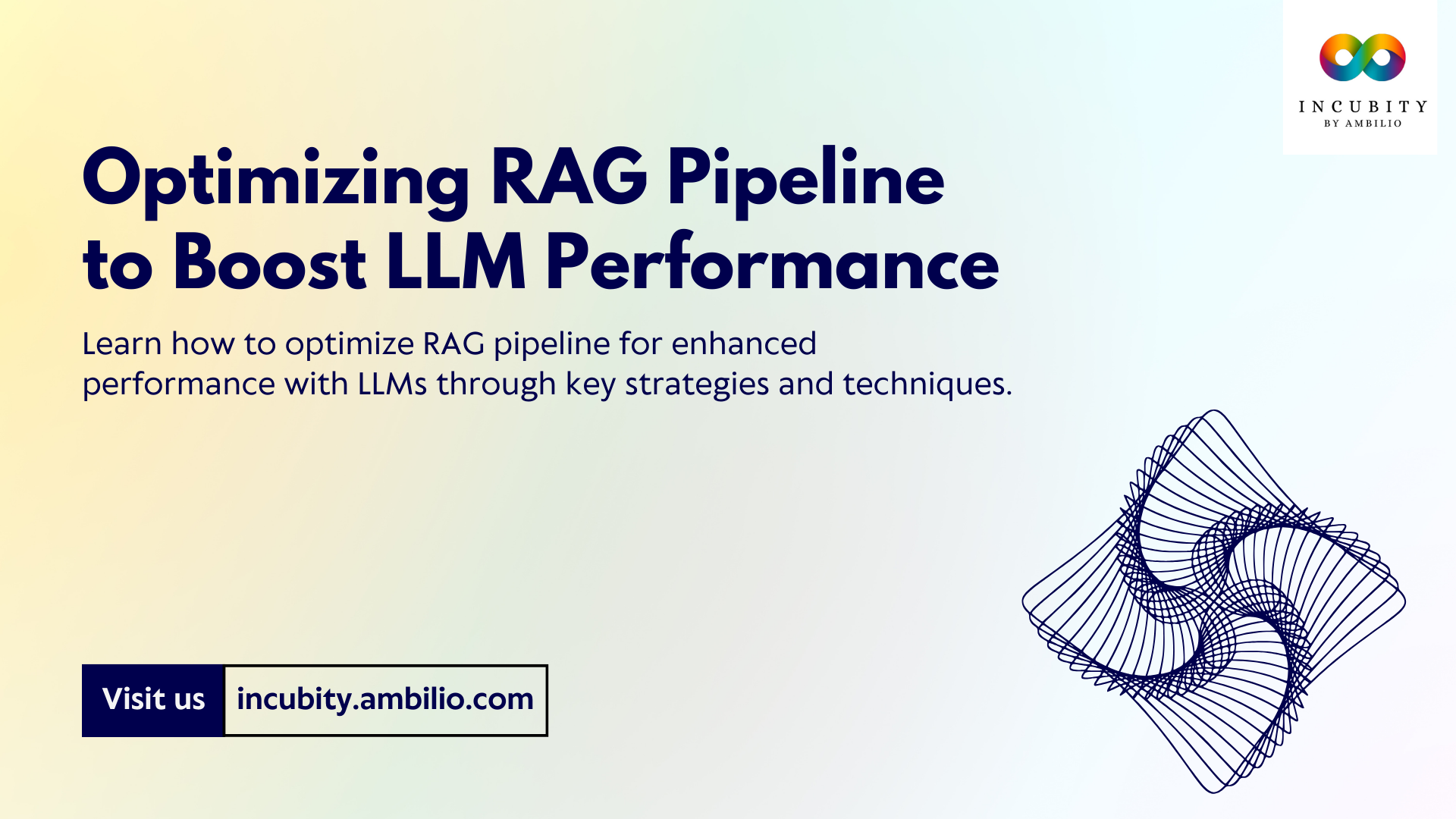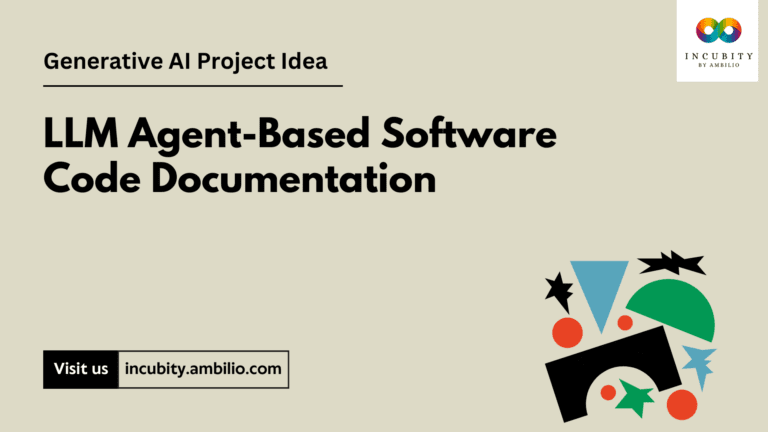The increasing use of Large Language Models (LLMs) in various fields has led to the development of sophisticated systems for information retrieval and natural language generation. One such system is the Retrieval-Augmented Generation (RAG) pipeline, which enhances LLMs by retrieving relevant data from external sources to generate more accurate and contextually aware responses. Optimizing the RAG pipeline is critical to maximizing the performance of LLMs, especially for tasks that require complex, domain-specific information retrieval. In this article, we will discuss the key strategies for optimizing a RAG pipeline, breaking down the pipeline components, and offering detailed technical insights into various optimization techniques.
Understanding the RAG Pipeline: Working Mechanism
A RAG pipeline is designed to address the limitations of LLMs in generating contextually accurate responses from a vast amount of data. It integrates two primary processes: retrieval and generation. Instead of relying solely on an LLM’s knowledge (which may be static or outdated), the RAG pipeline retrieves relevant information from an external data source, augments the input prompt, and then feeds it into the LLM to generate a response.
Key Components of the RAG Pipeline
- Data Ingestion: The first step involves collecting and preparing raw data from various sources (documents, websites, databases, etc.) for the pipeline.
- Chunking: Raw data is divided into smaller, manageable pieces called chunks. These chunks are critical for ensuring the efficient retrieval of relevant information.
- Embedding: The data chunks are converted into vector representations using an embedding model. These embeddings are dense vector representations of the chunks, capturing semantic information that aids retrieval.
- Vector Store: These embeddings are stored in a specialized database, often referred to as a vector store, which is optimized for similarity searches based on vector distances.
- LLM Interaction: When a user query is made, it is also transformed into a vector representation, and the relevant chunks are retrieved from the vector store. The retrieved chunks are then passed to the LLM to generate a contextually accurate response.
Key Optimization Techniques
Optimizing a RAG pipeline involves refining each of the core components to maximize the efficiency and accuracy of both retrieval and generation processes. Below are detailed optimization techniques for each part of the pipeline.
1. Data Quality and Structure
The performance of the entire RAG pipeline heavily depends on the quality and structure of the data ingested. Poorly structured or outdated data can lead to irrelevant chunks being retrieved, reducing the overall effectiveness of the system.
- Organizing and Formatting Data: Ensure that data is well-structured, labeled, and formatted. Structured data with proper labels and metadata can improve the accuracy of chunk retrieval by providing additional context for the vector search.
- Data Audits: Periodic data audits should be performed to remove obsolete or incorrect information. This ensures that the vector store contains only up-to-date and reliable data for LLM interaction.
2. Effective Chunking Strategies
Chunking, or splitting the raw data into smaller segments, is crucial for efficient retrieval. The strategy used to chunk data can have a significant impact on retrieval relevance.
- Semantic Chunking: Instead of using arbitrary chunk sizes, consider chunking based on semantic meaning. For example, chunk data according to paragraphs, logical sections, or topics rather than fixed sizes like word or sentence counts.
- Granularity Tuning: The chunk size should be optimized according to the complexity of the data. For instance, for highly detailed technical data, smaller chunks may yield better results, whereas broader subjects may benefit from larger, more comprehensive chunks.
- Contextual Metadata: Add metadata to chunks that describe the context of the data. Metadata such as topic tags, creation date, or data source can improve retrieval accuracy by guiding the system to choose the most relevant chunk.
3. Embedding Optimization
The choice of embedding model significantly affects the accuracy and performance of the retrieval process. Using outdated or suboptimal embedding models can lead to poor vector representations, reducing the overall retrieval quality.
- Domain-Specific Embeddings: Select an embedding model that is tailored to the specific domain or use case. For example, in a legal context, embeddings trained on legal documents will likely produce better results than generic embeddings.
- Fine-tuning Embeddings: Fine-tune the embedding model on the specific dataset to improve the semantic similarity search. This fine-tuning ensures that the embeddings capture nuances and domain-specific terminology.
- Indexing Strategies: When storing embeddings in the vector store, experiment with different indexing strategies. For example, indexing based on questions answered or summaries rather than full documents can help improve the retrieval relevance.
4. Query Optimization
How a query is processed and reformulated can significantly influence the retrieval of relevant chunks. Optimizing queries can help align them better with how data is indexed in the vector store.
- Query Reformulation: Implement query reformulation techniques that restructure user queries to align them more closely with the indexed chunks. This could involve expanding or refining the original query to match the structure of the vectorized data.
- Self-Reflection Mechanisms: Introduce a feedback loop in the query process where initial retrievals are assessed for relevance. This process involves re-evaluating retrieved chunks before passing them to the LLM, filtering out irrelevant results.
5. Retrieval Enhancements
Improving the retrieval process itself is critical for ensuring that only the most relevant chunks are passed to the LLM.
- Re-ranking Retrieved Documents: Once an initial set of chunks is retrieved, a secondary ranking process can be applied to prioritize the most relevant ones. This could be based on the similarity score, document freshness, or user intent.
- Multi-hop Retrieval: Allow the system to retrieve information in multiple passes. In cases where initial results are ambiguous, multi-hop retrieval allows the system to iteratively refine its understanding and retrieve more accurate chunks.
6. Contextualization for LLMs
The manner in which the retrieved information is presented to the LLM plays a critical role in the quality of the generated response.
- Contextual Prompting: The retrieved chunks should be presented as part of a prompt that clearly defines the user query and the context in which the LLM needs to respond. Prompt design should include necessary context while keeping it concise and relevant.
- High-Quality Prompts: Crafting high-quality prompts requires understanding real-world user behavior and intent. These prompts should ensure the LLM fully grasps the question and the retrieved chunks, leading to more precise answers.
Final Words
Optimizing a RAG pipeline requires a holistic approach, ensuring that every component from data ingestion to LLM interaction is fine-tuned for performance. Ensuring high data quality, employing effective chunking strategies, selecting the right embedding model, and refining query and retrieval processes are all critical to improving the relevance and accuracy of responses generated by LLMs. Furthermore, prompt design and context presentation can significantly enhance the final output quality.
As LLMs and RAG pipelines continue to evolve, regular evaluation and iteration of these components are necessary to maintain and improve performance over time. By following the optimization strategies outlined in this article, organizations can significantly enhance the efficiency and effectiveness of their RAG pipelines, leading to better outcomes in various applications ranging from customer support to financial analysis.


